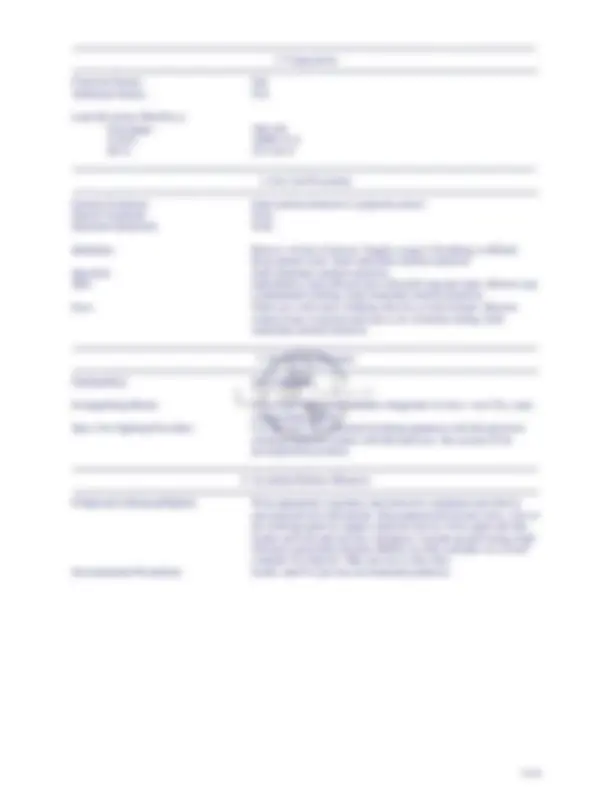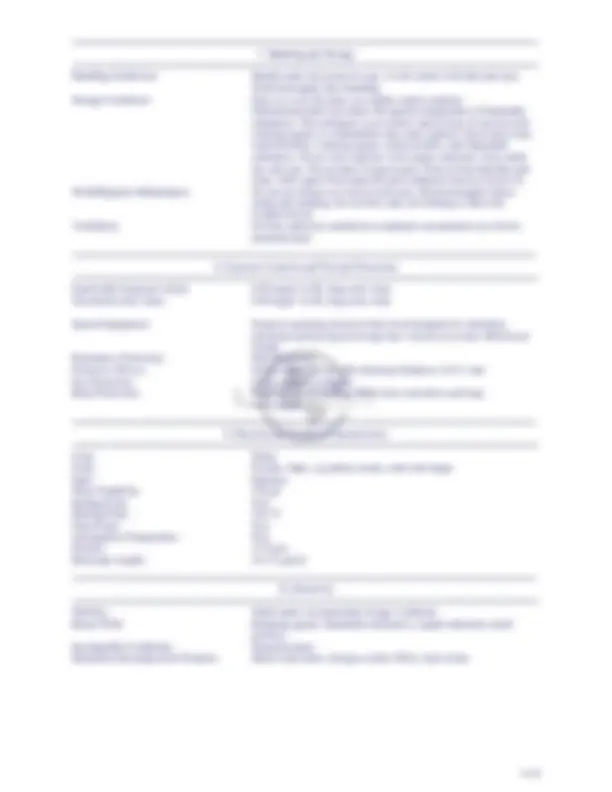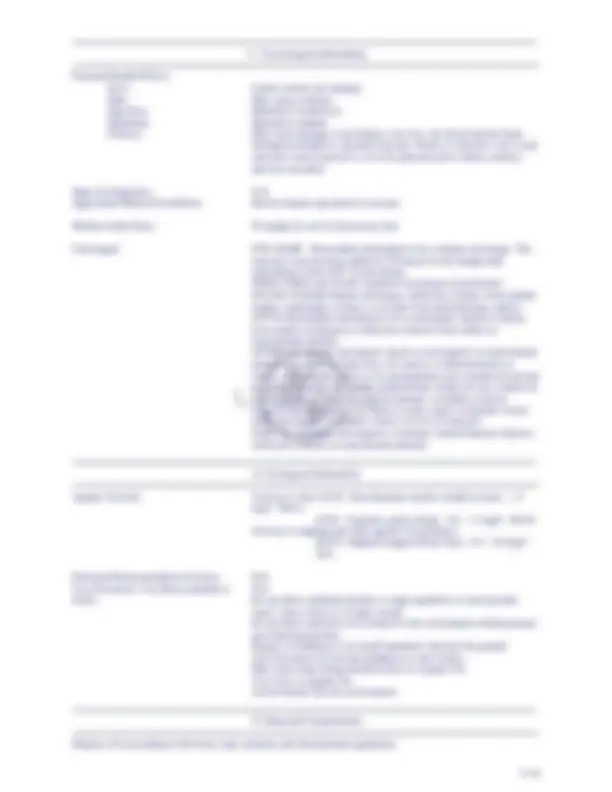





Study with the several resources on Docsity

Earn points by helping other students or get them with a premium plan


Prepare for your exams
Study with the several resources on Docsity

Earn points to download
Earn points by helping other students or get them with a premium plan
Community
Ask the community for help and clear up your study doubts
Discover the best universities in your country according to Docsity users
Free resources
Download our free guides on studying techniques, anxiety management strategies, and thesis advice from Docsity tutors
A safety data sheet for Lead (II) nitrate, a hazardous substance used in scientific research and development. It provides information on product identification, hazards identification, first aid procedures, handling and storage, toxicological information, and emergency response measures.
What you will learn
Typology: Lecture notes
1 / 6

This page cannot be seen from the preview
Don't miss anything!




LTS Research Laboratories, Inc. Safety Data Sheet Lead (II) nitrate –––––––––––––––––––––––––––––––––––––––––––––––––––––––––––––––––––––––––––––––––––––––––––––
Manufacturer/Supplier: LTS Research Laboratories, Inc. Street: 37 Ramland Road City: Orangeburg State: New York Zip Code: 10962 Country: USA Tel #: 855-587-2436 / 855-lts-chem
24-Hour Emergency Contact: 800-424-9300 (US & Canada) +1-703-527-3887 (International)
Hazard Statements: H272: May intensify fire; oxidizer. H302+H332: Harmful if swallowed or if inhaled H318: Causes serious eye damage. H350: May cause cancer. H360: May damage fertility or the unborn child. H373: May cause damage to the kidneys, the liver, the blood and the brain through prolonged or repeated exposure. H410: Very toxic to aquatic life with long lasting effects.
Precautionary Statements: P201: Obtain special instructions before use. P202: Do not handle until all safety precautions have been read and understood. P210: Keep away from heat. P220: Keep/Store away from clothing/ combustible materials. P221: Take any precaution to avoid mixing with combustibles. P260: Do not breathe dust/ fume/ gas/ mist/ vapors/ spray. P264: Wash skin thoroughly after handling. P270: Do not eat, drink or smoke when using this product. P271: Use only outdoors or in a well-ventilated area. P273: Avoid release to the environment. P280: Wear protective gloves/ protective clothing/ eye protection/ face protection. P301+P312+P330: IF SWALLOWED: Call a POISON CENTER/doctor if you feel unwell. Rinse mouth. P304+P340+P312: IF INHALED: Remove person to fresh air and keep comfortable for breathing. Call a POISON CENTER/doctor if you feel unwell. P305+P351+P338+P310: IF IN EYES: Rinse cautiously with water for several minutes. Remove contact lenses, if present and easy to do. Continue rinsing. Immediately call a POISON CENTER/doctor. P308+P313: IF exposed or concerned: Get medical advice/ attention. P370+P378: In case of fire: Use dry sand, dry chemical or alcohol- resistant foam to extinguish. P391: Collect spillage. P405: Store locked up. P501: Dispose of contents/container in accordance with local/regional/national/international regulations
HMIS Health Ratings (0-4): Health: 2 Flammability: 0 Physical: 2
–––––––––––––––––––––––––––––––––––––––––––––––––––––––––––––––––––––––––––––––––––––––––––––
Special Equipment: Properly operating chemical fume hood designed for hazardous chemicals and having an average face velocity of at least 100 feet per minute. Respiratory Protection: Dust Respirator Protective Gloves: Nitrile rubber gloves with minimum thickness of 0.11 mm Eye Protection: Safety glasses or goggles Body Protection: Protective work clothing. Wear close-toed shoes and long sleeves/pants.
–––––––––––––––––––––––––––––––––––––––––––––––––––––––––––––––––––––––––––––––––––––––––––––
–––––––––––––––––––––––––––––––––––––––––––––––––––––––––––––––––––––––––––––––––––––––––––––
Signs & Symptoms: N/A Aggravated Medical Conditions: Known human reproductive toxicant.
Median Lethal Dose: 93 mg/kg for rat by intravenous shot
Carcinogen: NTP: RAHC - Reasonably anticipated to be a human carcinogen. The reference note has been added by TD based on the background information of the NTP. (Lead nitrate) OSHA: OSHA specifically regulated carcinogen (Lead nitrate) EPA-B2: Probable human carcinogen, sufficient evidence from animal studies; inadequate evidence or no data from epidemiologic studies. NTP-R: Reasonably anticipated to be a carcinogen: limited evidence from studies in humans or sufficient evidence from studies in experimental animals. ACGIH A3: Animal carcinogen: Agent is carcinogenic in experimental animals at a relatively high dose, by route(s) of administration, at site(s), of histologic type(s) or by mechanism(s) not considered relevant to worker exposure. Available epidemiologic studies do not confirm an increased risk of cancer in exposed humans. Available evidence suggests that the agent is not likely to cause cancer in humans except under uncommon or unlikely routes or levels of exposure IARC-2A: Probably carcinogenic to humans: limited human evidence; sufficient evidence in experimental animals.
–––––––––––––––––––––––––––––––––––––––––––––––––––––––––––––––––––––––––––––––––––––––––––––
Persistent Bioaccumulation Toxicity: N/A Very Persistent, Very Bioaccumulative: N/A Notes: Do not allow undiluted product or large quantities to reach ground water, water course or sewage system Do not allow material to be released to the environment without proper governmental permits. Danger to drinking if even small quantities leak into the ground Also poisonous for fish and plankton in water bodies. May cause long lasting harmful effects to aquatic life. Very toxic to aquatic life. Avoid transfer into the environment.
–––––––––––––––––––––––––––––––––––––––––––––––––––––––––––––––––––––––––––––––––––––––––––––